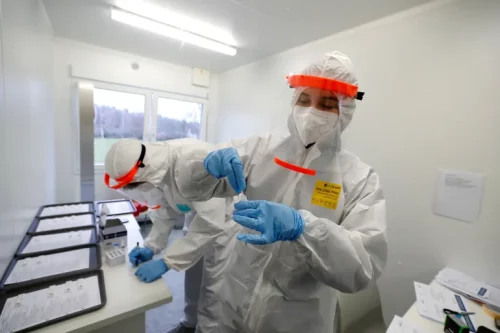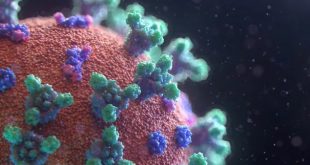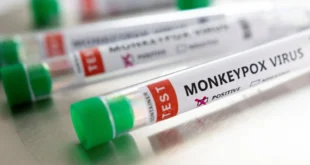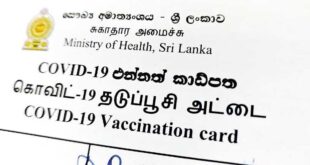The new variant has spread across 41 countries as the WHO categorises it as a ‘variant of interest’.

 JN.1 has been detected in the US, India, China, France, Canada and many other countries [File: Petr David Josek/AP Photo]
JN.1 has been detected in the US, India, China, France, Canada and many other countries [File: Petr David Josek/AP Photo]A new strain of SARS-CoV-2, the virus that caused the coronavirus pandemic four years ago, has been detected in dozens of countries.
The World Health Organization (WHO) on Tuesday categorised the JN.1 as a “variant of interest”. After first being spotted in the United States in September, the variant has spread across 41 countries.
The new variant is now being closely monitored by public health agencies across the world due to its increased transmission rate.
Here’s what there is to know about the strain and its current risk.
What is the new COVID-19 strain JN.1?
The new coronavirus strain, JN.1, has arisen from the most recent variant before it, named BA 2.86. The latter is itself part of the lineage of the “Omicron” variant – a more severe strain of COVID-19 that peaked last year.
Each virus has its own unique “spike proteins” enabling them to infect cells and cause certain symptoms. Additional changes or “mutations” in the DNA sequence of those spikes indicate the emergence of a new “variant” of the virus.
Variants can differ in terms of their severity, contagion and response to treatments for symptoms.
“The new variant exhibits a greater genetic divergence from its predecessors, signifying an ongoing evolution of the virus,” said Laith Abu-Raddad, professor of healthcare policy and research, at Weill Cornell Medicine in Qatar.
While BA 2.86 has 20 mutations in its spike proteins, JN.1 has 21. The Centers for Disease Control and Prevention (CDC) in the United States have named this additional mutation L455S and said it may be helping the virus to evade responses from our immune systems.
Experiencing a COVID-19 infection or getting vaccinated typically enables the immune system’s antibodies to fight off the virus when exposed to it again.
Where has JN.1 been detected?
JN.1 was first detected in the US in September, a month after its parent variant, BA 2.86, was recorded in the country. It has since spread across 41 countries, the WHO reported on Monday, based on 7,344 sequences that were submitted to them.
Sequences of viruses from PCR tests are regularly analysed to detect new strains.
For the first month or so, JN.1 only accounted for 0.1 percent of coronavirus transmissions in the US. As of December 8, however, it is responsible for between 15 and 29 percent of COVID cases, according to the CDC.
However, the agency also noted that the coronavirus has a pattern of peaking around the new year.
Other countries with a large number of cases include France, Singapore, Canada, the United Kingdom and Sweden, according to WHO. China also detected seven cases last week.
In early December, JN.1 was also found in the Indian state of Kerala. A 79-year-old female patient had mild, influenza-like symptoms and has since recovered. On Monday, neighbouring Karnataka state’s health minister made masks mandatory for those above the age of 60, as well as people with heart or breathing issues. India has reported 21 cases of the JN.1 virus so far.
Should we be concerned about JN.1?
The CDC has not found evidence suggesting that JN.1 poses an increased risk to public health compared with other variants, and experts say the rise in cases may be part of winter season trends and conditions.
For instance, people across the world are spending more time indoors allowing pathogens to spread more efficiently. “The need for heating often leads to reduced ventilation in homes, presenting an environment conducive to increased virus transmission,” said Abu-Radda
Types of symptoms are expected to be the same as COVID-19, and pandemic-era measures such as social distancing and wearing masks have been encouraged as precautions.
“While there may be an increase in infections, the vast majority of cases are not anticipated to be severe,” noted Abu-Raddad.
What has the WHO said about JN.1?
The WHO also said on Tuesday that its risk in terms of severity is currently evaluated as low and will be updated if needed. Its growth advantage has been categorised as “high” owing to the rising number of cases over the last few weeks.
The agency noted that other respiratory diseases such as influenza are also on the rise amid the onset of winter in the northern hemisphere, and that JN.1 transmission may further burden health facilities.
The WHO’s technical lead for COVID-19, Maria Van Kerkhove, said in a public statement that the agency has asked member states to closely monitor coronavirus cases and share data on samples when available so that they can better assess circulation and “potentially modify what we are advising to the world”.
Vaccines will also continue to protect from severe effects of the variant, said WHO.
What are the symptoms of JN.1?
Like other COVID-19 variants, symptoms will differ based on a person’s immunity and overall health, according to the CDC.
Common symptoms include fever or chills, cough, fatigue and body aches.
 Sri lanka Muslims Web Portal Diversity and Inclusiveness
Sri lanka Muslims Web Portal Diversity and Inclusiveness



